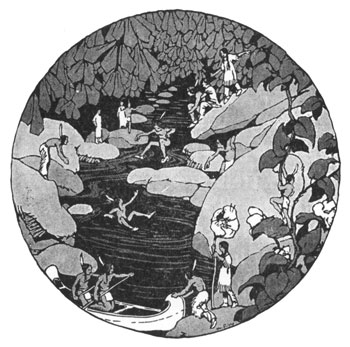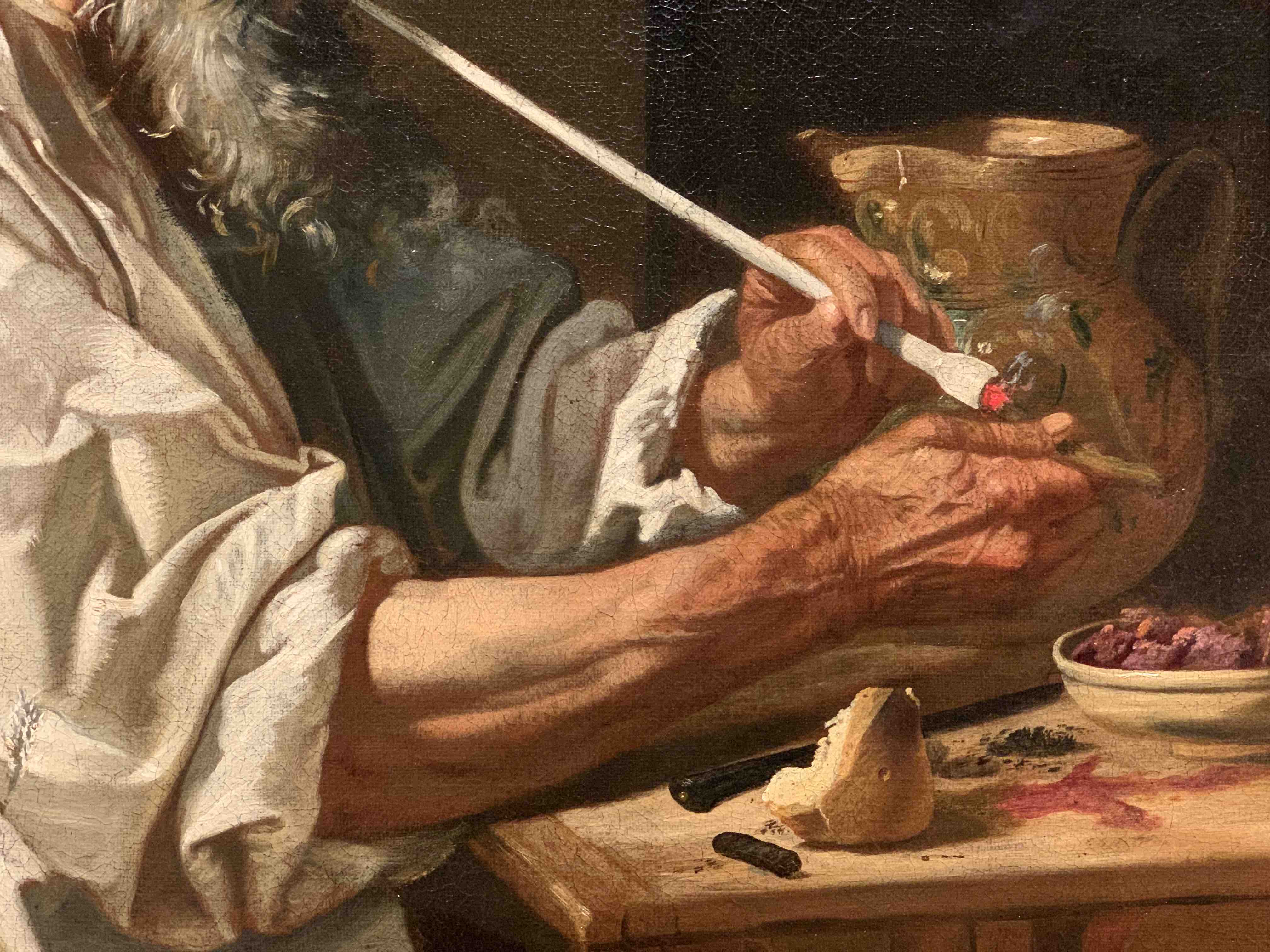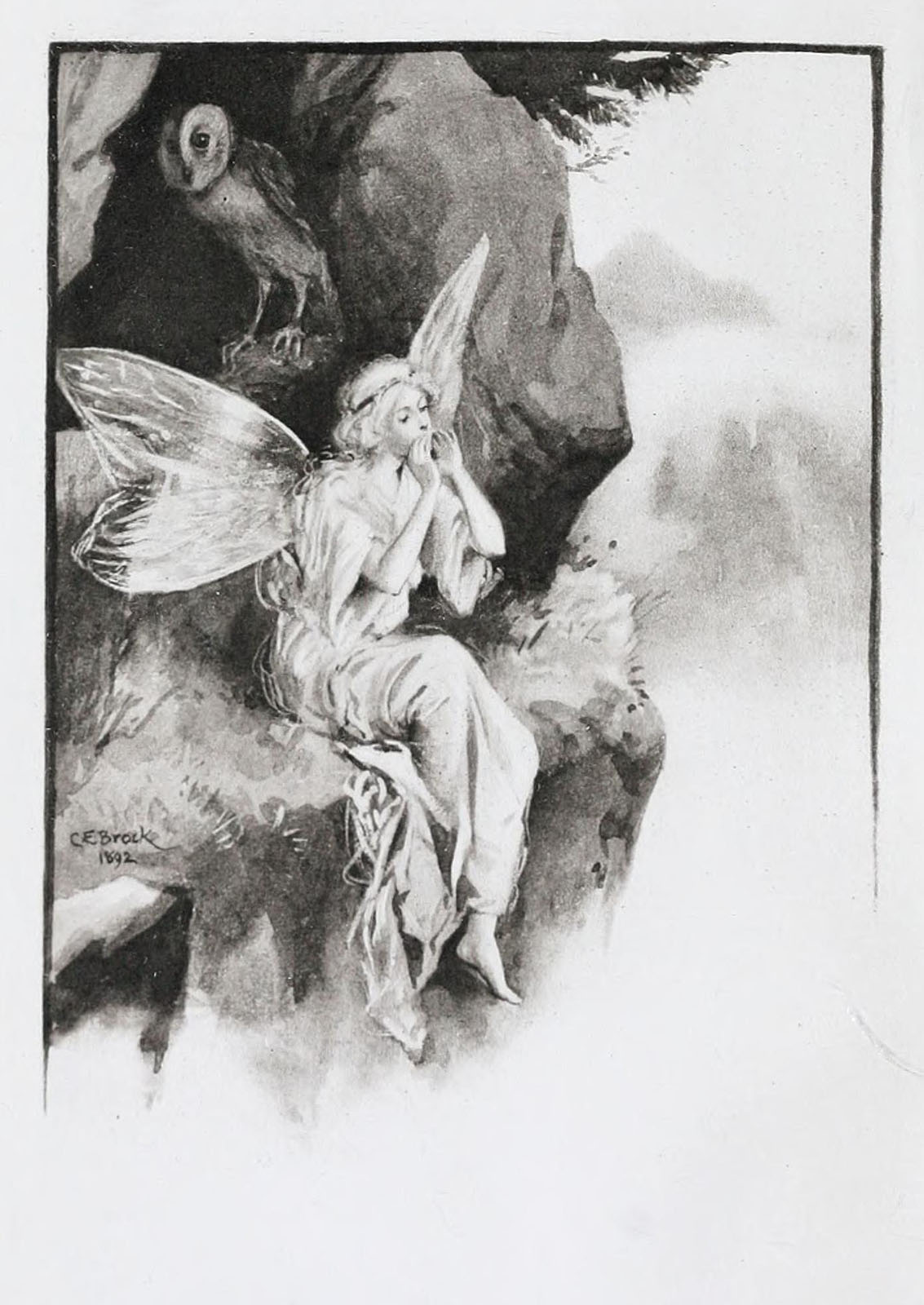|
Aziza (African Mythology)
The Aziza (African) are a type of beneficent supernatural race in West African (specifically, Dahomey) mythology. Living in the forest, they provide good magic for hunters. They are also known to have given practical and spiritual knowledge to people (including knowledge of the use of fire). The Aziza are described as little people and are said to live in anthills and silk-cotton trees. The plant genus ''Aziza'' has been named in their honour. While the Aziza are usually described as a people, some traditions also refer to a single individual by name "Aziza", with similar traits. For example, Jeje oral tradition has a divinity called "Aziza" (described as a small, single-legged man smoking a pipe). Aziza is also a god of the Urhobo people The Urhobos are a people located in southern Nigeria, near the northwestern Niger Delta. They are the major ethnic group in Delta State. The people of this ethnic group speak the Urhobo language. Their population is approximately 7 millio ... [...More Info...] [...Related Items...] OR: [Wikipedia] [Google] [Baidu] |
West Africa
West Africa, also known as Western Africa, is the westernmost region of Africa. The United Nations geoscheme for Africa#Western Africa, United Nations defines Western Africa as the 16 countries of Benin, Burkina Faso, Cape Verde, The Gambia, Ghana, Guinea, Guinea-Bissau, Ivory Coast, Liberia, Mali, Mauritania, Niger, Nigeria, Senegal, Sierra Leone, and Togo, as well as Saint Helena, Ascension and Tristan da Cunha (United Kingdom Overseas Territories, United Kingdom Overseas Territory).Paul R. Masson, Catherine Anne Pattillo, "Monetary union in West Africa (ECOWAS): is it desirable and how could it be achieved?" (Introduction). International Monetary Fund, 2001. The population of West Africa is estimated at around million people as of , and at 381,981,000 as of 2017, of which 189,672,000 were female and 192,309,000 male.United Nations Department of Economic and Social Affairs, Population Division (2017). World Population Prospects: The 2017 Revision, custom data acquired via webs ... [...More Info...] [...Related Items...] OR: [Wikipedia] [Google] [Baidu] |
Dahomey Mythology
The Dahomean religion was practiced by the Fon people of the Dahomey Kingdom. The kingdom existed until 1898 in what is now the country of Benin. People taken from Dahomey to the Caribbean used elements of the religion to form Haitian Vodou Haitian Vodou () is an African diasporic religions, African diasporic religion that developed in Haiti between the 16th and 19th centuries. It arose through a process of syncretism between several traditional religions of West Africa, West and ... and other African diasporic religions. See also * West African Vodun References External links Vodoun Culture Haitian Vodoun as chronicled by native Haitians Baba Alawoye.comBaba'Awo Awoyinfa Ifaloju, showcasing Ifa using web media 2.0 (blogs, podcasting, video and photocasting) Traditional African religions {{Traditional-African-religions-stub ... [...More Info...] [...Related Items...] OR: [Wikipedia] [Google] [Baidu] |
Magic (paranormal)
Magic, sometimes spelled magick, is the application of beliefs, rituals or actions employed in the belief that they can manipulate natural or supernatural beings and forces. It is a category into which have been placed various beliefs and practices sometimes considered separate from both religion and science. Connotations have varied from positive to negative at times throughout history. Within Western culture, magic has been linked to ideas of the Other, foreignness, and primitivism; indicating that it is "a powerful marker of cultural difference" and likewise, a non-modern phenomenon. During the late nineteenth and early twentieth centuries, Western intellectuals perceived the practice of magic to be a sign of a primitive mentality and also commonly attributed it to marginalised groups of people. Aleister Crowley (1875–1947), a British occultist, defined " magick" as "the Science and Art of causing Change to occur in conformity with Will", adding a 'k' to distinguish c ... [...More Info...] [...Related Items...] OR: [Wikipedia] [Google] [Baidu] |
Fire
Fire is the rapid oxidation of a fuel in the exothermic chemical process of combustion, releasing heat, light, and various reaction Product (chemistry), products. Flames, the most visible portion of the fire, are produced in the combustion reaction when the fuel reaches its ignition point temperature. Flames from hydrocarbon fuels consist primarily of carbon dioxide, water vapor, oxygen, and nitrogen. If hot enough, the gases may become ionized to produce Plasma (physics), plasma. The color and Intensity (heat transfer), intensity of the flame depend on the type of fuel and composition of the surrounding gases. Fire, in its most common form, has the potential to result in conflagration, which can lead to permanent physical damage. It directly impacts land-based ecological systems worldwide. The positive effects of fire include stimulating plant growth and maintaining ecological balance. Its negative effects include hazards to life and property, atmospheric pollution, and water ... [...More Info...] [...Related Items...] OR: [Wikipedia] [Google] [Baidu] |
Little People (mythology)
Little people have been part of the folklore of many cultures in human history, including Ireland, Greece, the Philippines, the Hawaiian Islands, New Zealand, Flores, Flores Island, Indonesia, and Indigenous peoples of the Americas, Native Americans. Native American folklore The indigenous peoples of the Americas, Native peoples of North America told legends of a race of "little people" who lived in the woods near sandy hills and sometimes near rocks located along large bodies of water, such as the Great Lakes. Often described as "hairy-faced dwarfs" in stories, petroglyph illustrations show them with horns on their head and traveling in a group of 5 to 7 per canoe. The Pryor Mountains of Montana and Wyoming are said to house "fairy rings" Other legends say the little people, if seen by an adult human, would beg them not to say anything of their existence and would reward those who kept their word by helping them and their family out in times of need. From tribe to tribe there ... [...More Info...] [...Related Items...] OR: [Wikipedia] [Google] [Baidu] |
Anthill
An ant colony is a population of ants, typically from a single species, capable of maintaining their complete lifecycle. Ant colonies are eusocial, communal, and efficiently organized and are very much like those found in other social Hymenoptera, though the various groups of these developed sociality independently through convergent evolution. The typical colony consists of one or more egg-laying queens, numerous sterile females (workers, soldiers) and, seasonally, many winged sexual males and females. In order to establish new colonies, ants undertake flights that occur at species-characteristic times of the day. Swarms of the winged sexuals (known as alates) depart the nest in search of other nests. The males die shortly thereafter, along with most of the females. A small percentage of the females survive to initiate new nests. Etymology The term "ant colony" refers to a population of workers, reproductive individuals, and brood that live together, cooperate, and treat on ... [...More Info...] [...Related Items...] OR: [Wikipedia] [Google] [Baidu] |
Ceiba Pentandra
''Ceiba pentandra'' is a tropical tree of the order (biology), order Malvales and the family (biology), family Malvaceae (previously emplaced in the family Bombacaceae), native to Mexico, Central America and the Caribbean, northern South America, and (as the variety ''C. pentandra'' var ''guineensis'') West Africa. A somewhat smaller variety has been introduced to South Asia, South and Southeast Asia, where it is cultivated. The tree and the cotton-like fluff obtained from its seed pods are commonly known in English as kapok, a Malay language, Malay-derived name which originally applied to ''Bombax ceiba'', a native of tropical Asia. In Spanish-speaking countries the tree is commonly known as "ceiba" and in French-speaking countries as fromager. The tree is cultivated for its cottonlike seed Kapok fibre, fibre, particularly in south-east Asia, and is also known as the Java cotton, Java kapok, silk-cotton or samauma. Characteristics The tree grows up to tall as confirmed by clim ... [...More Info...] [...Related Items...] OR: [Wikipedia] [Google] [Baidu] |
Smoking Pipe
A smoking pipe, often simply referred to as a pipe, is used to inhale (or taste) the smoke of a burning substance, typically (though not exclusively) used to consume a Psychoactive drug, psychoactive substance; this most commonly refers to a tobacco pipe, however it can also refer to a cannabis Bowl (smoking), pipe (bowl). Pipes are commonly made from Erica arborea#Uses, briar, Ericaceae, heather, maize, corncob, meerschaum, clay, cherry, glass, porcelain, ebonite and acrylic resin, acrylic. Dutch pipe smoking During the 17th century, pipe smoking became a new trend among the Dutch young, in specific the upper and middle class students. These students copied the Spain, Spanish sailors and soldiers in the area by joining them in participation of pipe smoking. In particular they were interested in the novelty it brought, which was the taste of smoke. However, the only way to smoke tobacco was through a pipe. Popularity grew throughout and became a mainstream habit for the Dutch ... [...More Info...] [...Related Items...] OR: [Wikipedia] [Google] [Baidu] |
Urhobo People
The Urhobos are a people located in southern Nigeria, near the northwestern Niger Delta. They are the major ethnic group in Delta State. The people of this ethnic group speak the Urhobo language. Their population is approximately 7 million. The Urhobo people live in a territory bounded by latitudes 6° and 5°, 15° North and Longitudes 5°, 40° and 6°, 25° East in the Delta and Bayelsa States of Nigeria. Their neighbors are the Isoko to the southeast, the Itsekiri and Ijaw to the west, the Edo people to the north, the Ijaw to the south and the Ukwuani people to the northeast. History The Ughelli and Agbon Kingdoms are the oldest kingdoms in Urhobo land. The Ughelli and Agbor Kingdoms can be traced to about the 14th century. Ughelli oral tradition has it that the great ancestor and founding father of Ughelli (Ughene) was the second son of Oghwoghwa, a prince from Benin Kingdom. The Okpe Kingdom is also one of the twenty four kingdoms in Urhobo land. The Kingdom has been ... [...More Info...] [...Related Items...] OR: [Wikipedia] [Google] [Baidu] |
Fairies
A fairy (also called fay, fae, fae folk, fey, fair folk, or faerie) is a type of mythical being or legendary creature, generally described as anthropomorphism, anthropomorphic, found in the folklore of multiple European cultures (including Celtic mythology, Celtic, Slavic paganism, Slavic, Germanic folklore, Germanic, and French folklore, French folklore), a form of Supernatural#Spirit, spirit, often with metaphysical, supernatural, or preternatural qualities. Myths and stories about fairies do not have a single origin but are rather a collection of folk beliefs from disparate sources. Various folk theories about the origins of fairies include casting them as either demoted angels or demons in a Christian mythology, Christian tradition, as deities in Paganism, Pagan belief systems, as Spirit (supernatural entity), spirits of the dead, as Prehistory, prehistoric precursors to humans, or as spirits of nature. The label of ''fairy'' has at times applied only to specific Magic (su ... [...More Info...] [...Related Items...] OR: [Wikipedia] [Google] [Baidu] |
West African Legendary Creatures
West is one of the four cardinal directions or points of the compass. It is the opposite direction from east and is the direction in which the Sun sets on the Earth. Etymology The word "west" is a Germanic word passed into some Romance languages (''ouest'' in French, ''oest'' in Catalan, ''ovest'' in Italian, ''vest'' in Romanian, ''oeste'' in Spanish and Portuguese). As in other languages, the word formation stems from the fact that west is the direction of the setting sun in the evening: 'west' derives from the Indo-European root ''*wes'' reduced from ''*wes-pero'' 'evening, night', cognate with Ancient Greek ἕσπερος hesperos 'evening; evening star; western' and Latin vesper 'evening; west'. Examples of the same formation in other languages include Latin occidens 'west' from occidō 'to go down, to set' and Hebrew מַעֲרָב (maarav) 'west' from עֶרֶב (erev) 'evening'. West is sometimes abbreviated as W. Navigation To go west using a compass for navigatio ... [...More Info...] [...Related Items...] OR: [Wikipedia] [Google] [Baidu] |
Dahomean Mythology
The Dahomean religion was practiced by the Fon people of the Dahomey Kingdom. The kingdom existed until 1898 in what is now the country of Benin. People taken from Dahomey to the Caribbean used elements of the religion to form Haitian Vodou and other African diasporic religions. See also * West African Vodun References External links Vodoun Culture Haitian Vodoun as chronicled by native Haitians Baba Alawoye.comBaba'Awo Awoyinfa Ifaloju, showcasing Ifa using web media 2.0 (blogs, podcasting, video and photocasting) Traditional African religions {{Traditional-African-religions-stub ... [...More Info...] [...Related Items...] OR: [Wikipedia] [Google] [Baidu] |






